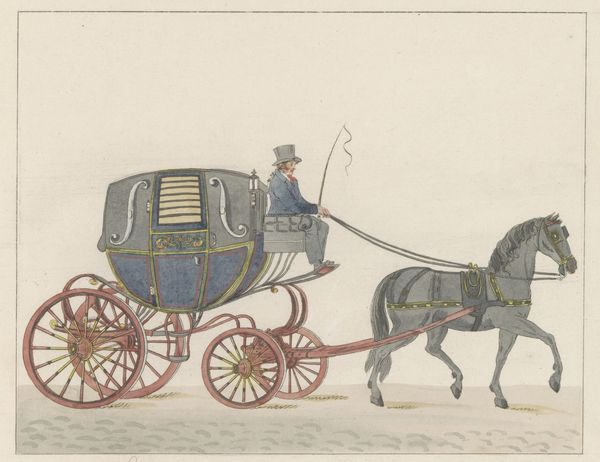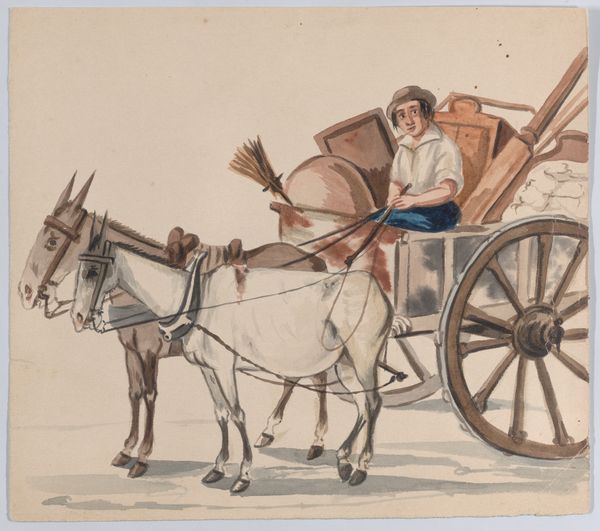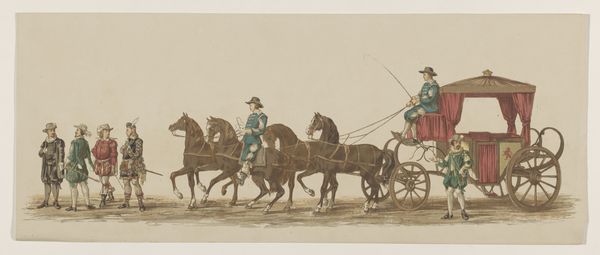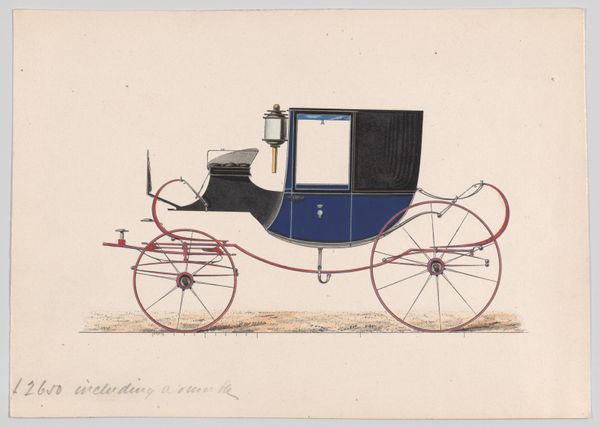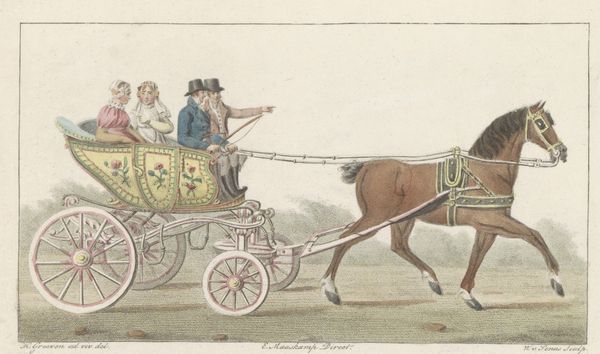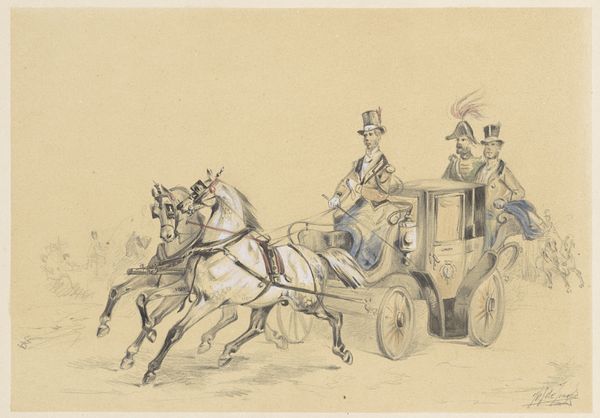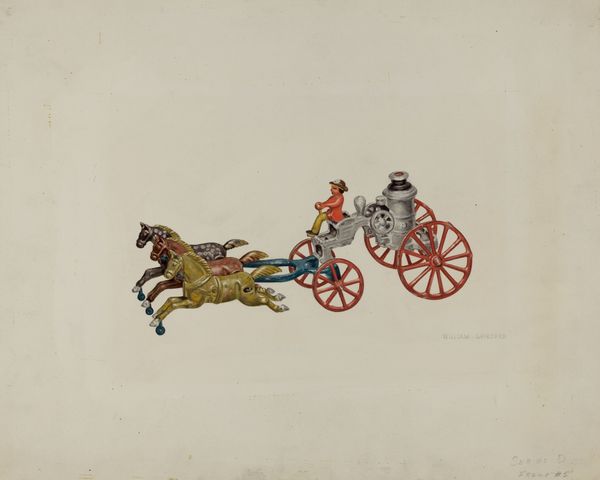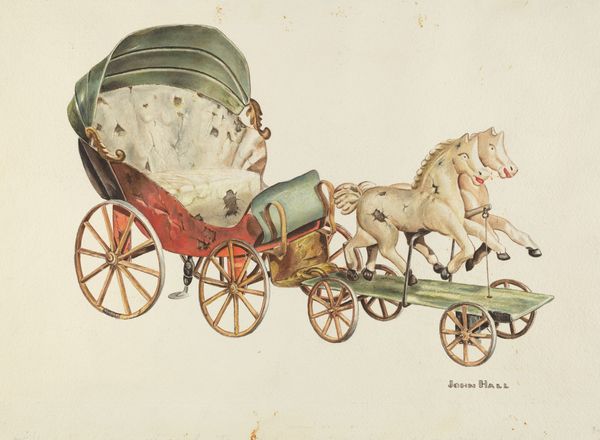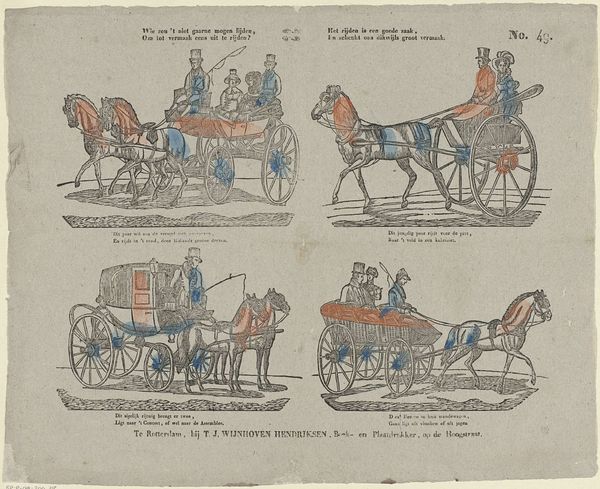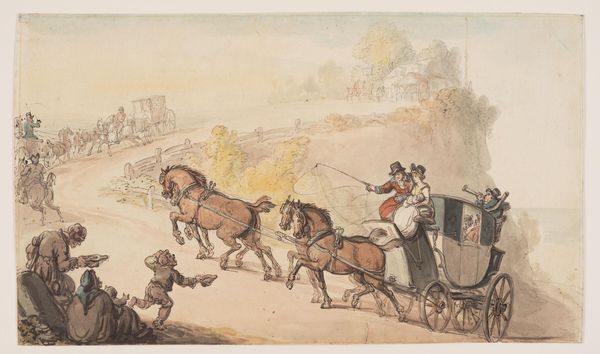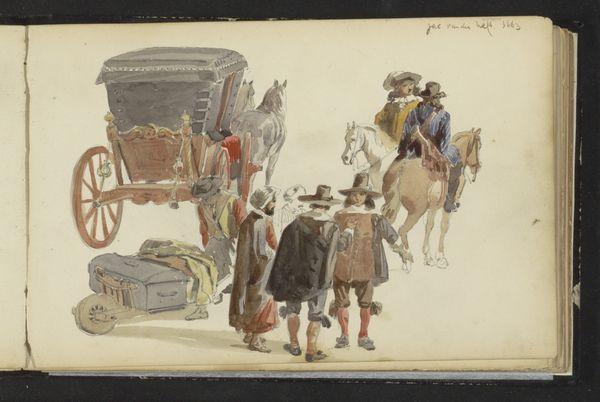
drawing, print, watercolor
#
drawing
# print
#
caricature
#
watercolor
#
romanticism
#
horse
#
men
#
cityscape
#
watercolour illustration
#
genre-painting
Dimensions: Sheet: 11 9/16 × 15 7/8 in. (29.4 × 40.3 cm)
Copyright: Public Domain
Curator: Here we have Louis Philibert Debucourt’s "Route de St. Cloud," created in 1816. It's a print, delicately rendered with watercolor. Editor: My first impression is one of barely controlled chaos, a frenzy of motion captured with surprisingly gentle washes of color. Curator: Indeed. Debucourt often used his art to subtly critique the societal norms of his time. This print provides a glimpse into post-Revolutionary France, perhaps commenting on the disparities within Parisian society. We see a coach hurrying down the road. The expressions on the faces within the carriage appear strained, disconnected. Editor: I agree. The almost caricatured depiction of the passengers draws attention to the distortions. And the horse itself—the exaggeration of its straining muscles, the flared nostrils—conveys an undeniable sense of urgency. Semiotically, it becomes a signifier for the anxieties bubbling just beneath the surface of Romanticism. Curator: Absolutely. Debucourt used watercolor not merely for aesthetics but to hint at the fragility of the era. The driver urging on the horse suggests a society rushing forward, perhaps without direction. This resonates with discussions surrounding social mobility and the evolving class structure of the time. There's a clear distinction between those being transported and the labor driving them. Editor: Note how the artist’s line is loose and gestural, a conscious decision that creates a sense of immediacy. The rapid strokes echo the subject’s headlong movement. The composition drives our eye from left to right—an implied narrative of acceleration, reinforced by the road cutting diagonally through the scene. Curator: Considering that this work, dating back to 1816, offers invaluable insights into post-Revolutionary France’s complicated landscape, it serves as a crucial point for interpreting the period. Editor: This study of contrasts—between the rough materiality and fluid medium, between order and frenzy—holds power beyond its historical significance. A beautiful paradox, and skillfully composed.
Comments
No comments
Be the first to comment and join the conversation on the ultimate creative platform.


